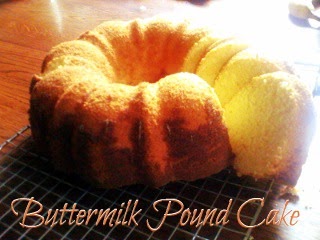Yet again, I used up another four tablespoons of buttermilk.
I didn't just want to - I had to.
It was beautiful. Much better than the first attempt made by Mom.
It was supposedly my fault because I greased the cake pan. Apparently I didn't grease it enough?
This time, I greased furiously.
Fortunately, it worked.
I used a recipe from allrecipes. Personally I think there were too much eggs.
My cake looks yellower than the one on the website. My guess is because I didn't use vanilla extract. [What is so amazing about vanilla extract anyway? What happened to chocolate extract?] I used two teaspoons of lemon extract. Hmm. Had I used orange extract... or even strawberry extract... or blackberry...
Next try: Try a different extract and see if it changes anything else besides the color.
I had trouble taking the cake out of the pan. Probably because I greased the pan, but didn't flour it.
Next try: Grease AND flour the pan. Think of it as putting lotion on, and then baby powder.
When I put the cake inside the oven, only part of it was baked. One side was left yellow and soft. I think this is because I placed the pan too close to the oven door.
Next try: Push it farther into the oven. >:D
I had the powder type buttermilk. I measured four tablespoons of it and measured a cup of water. I wonder what would happen if I mixed the buttermilk powder with the water.
Next try: Mix buttermilk powder with water. >:D
 |
| Eggs, buttermilk, baking powder, lemon extract, butter, salt, and water. |
 |
| Bundt pan, sugar, and flour. |
IT WAS SUPPOSED TO BE ALTERNATELY.
I regretted the moment and wanted to rewind, but I continued pouring in the dry ingredients. Make mistakes and learn they say.
Fortunately it made no impact on the cake. If I'd been using liquid buttermilk I probably would have failed. Woot for powder buttermilk!
.JPG) | |
| Beautifully greasy butter wrapper. Time to grease! |
Now cream the butter with the sugar.
Mix in the eggs one at a time, and beat well after each addition.
Then stir in the extracts.
.JPG) |
| The oven's done. How long did it take? |
Then pour the mixture into your cake pan and place it generously in the prepared oven. Set the timer for an hour and thirty minutes.
And after an hour and thirty minutes, open the oven to reveal... voila!!
-N-

.JPG)



.JPG)



.JPG)
.JPG)
.JPG)

.JPG)


.JPG)




.JPG)



.JPG)



